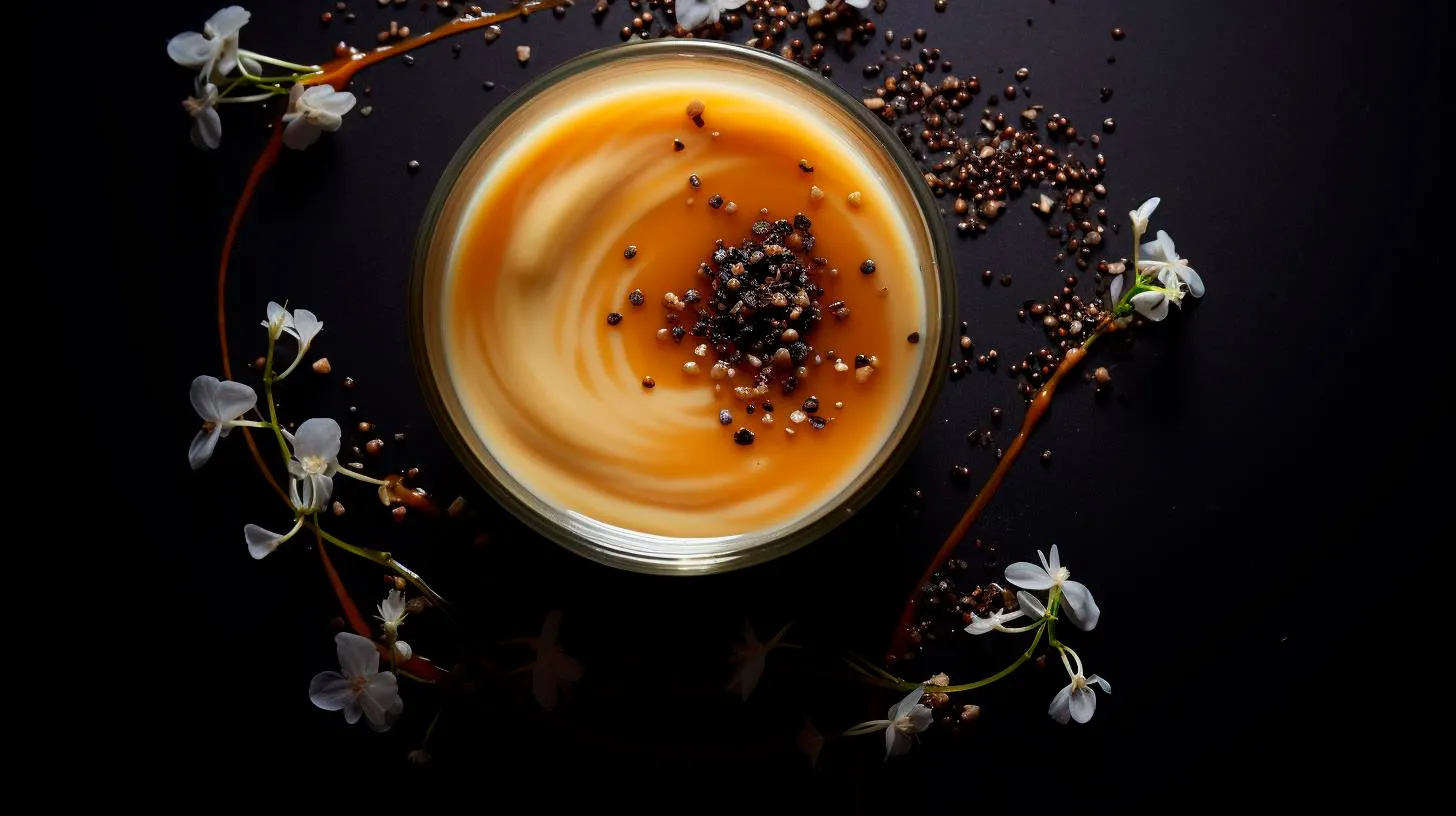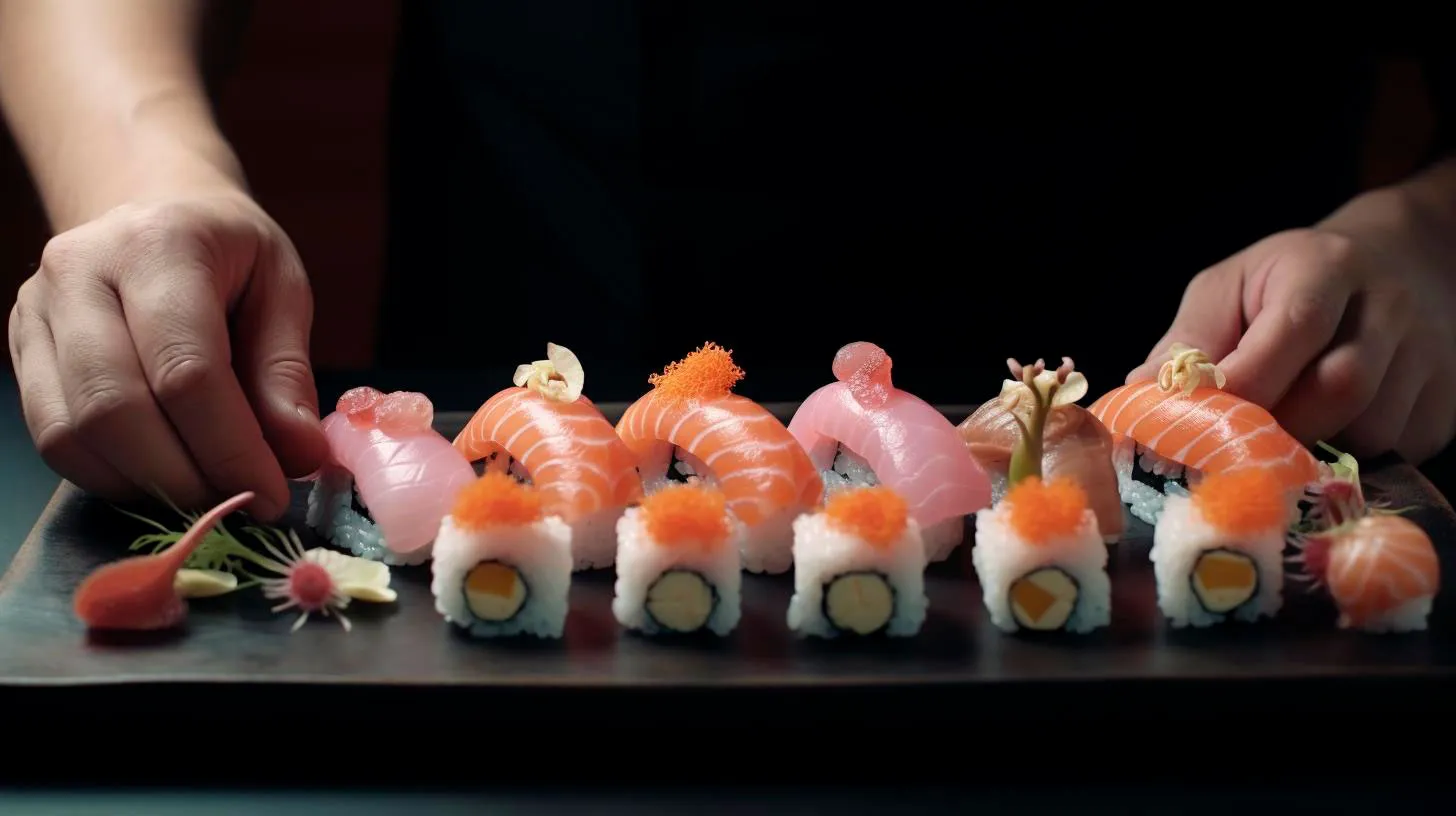How to Safely Store and Preserve the Quality of Your Sushi Knife
Whether you’re a professional chef or an avid sushi enthusiast, knowing how to store and care for your sushi knife properly is of utmost importance. In this article, we will delve into the best practices for storing and preserving the quality of your sushi knife to ensure it remains sharp and durable over time.
1. Clean and Dry Your Knife Thoroughly
Before storing your sushi knife, it is crucial to clean and dry it thoroughly. This simple practice not only removes any leftover food particles but also prevents rust and bacterial growth. Here are some essential steps to follow:
- Gently wash the blade with warm water and a mild dish soap immediately after use.
- Using a soft sponge or cloth, remove any stubborn stains or residue.
- Rinse the knife thoroughly to ensure all soap is removed.
- Dry the blade using a clean towel or cloth to prevent moisture from seeping into the knife handle.
2. Store Your Knife in a Knife Block or Sheath
Proper storage is crucial for preserving the quality and sharpness of your sushi knife. Storing it haphazardly in a drawer can lead to accidental damage or injuries. Consider the following options to ensure safe storage:
- Use a knife block: A knife block with individual slots ensures that each knife is kept separate and secure. It also prevents contact with other utensils, thus reducing the risk of damage.
- Invest in a knife sheath: A knife sheath is an excellent option for protecting the blade while keeping it easily accessible. Make sure the sheath is made of a material that is knife-friendly and has a snug fit.
- Avoid countertop storage: Leaving your sushi knife exposed on the countertop can potentially lead to accidents or damage. Always store it in a designated location.
3. Regularly Sharpen Your Knife
Keeping your sushi knife sharp is not only crucial for precise cutting but also helps to maintain the quality of your ingredients. A dull knife may crush or tear the sushi, negatively impacting the overall taste and presentation. Here are some tips for sharpening your sushi knife:
- Invest in a quality sharpening stone: A Japanese waterstone is highly recommended for sharpening sushi knives. It provides the necessary grit and precision required for maintaining a sharp edge.
- Follow the proper sharpening technique: Maintain a consistent angle while sharpening the knife, typically around 15 to 20 degrees. Apply even pressure and use smooth strokes to sharpen the blade effectively.
- Regular maintenance: Regularly honing your knife with a honing rod or ceramic honing steel helps maintain the edge between sharpenings.
4. Avoid Improper Cutting Surfaces
The cutting surface you use can greatly affect the overall lifespan and quality of your sushi knife. Avoid cutting on surfaces that can damage the blade, such as:
- Glass or granite cutting boards: These hard surfaces can cause the knife’s blade to become dull quickly.
- Avoid cutting on metal or ceramic plates: Using plates as a cutting surface can cause damaging scratches on the blade.
- Choose wooden or plastic cutting boards: Opt for softer cutting surfaces like wooden or plastic cutting boards to preserve the sharpness of your knife.
Key Takeaways
Properly storing and maintaining your sushi knife is essential for both its longevity and the quality of your sushi. Here are the key takeaways to keep in mind:
- Clean and dry your knife thoroughly after each use to prevent rust and bacterial growth.
- Invest in a quality knife block or sheath to store your knife safely and prevent accidental damage.
- Regularly sharpen your knife using a Japanese waterstone or other suitable sharpening tools.
- Choose a suitable cutting surface to avoid damaging the blade.
By following these practices, you can ensure that your sushi knife remains in excellent condition, allowing you to create delicious sushi at home while maintaining the highest standards of quality.
Choosing the Right Sushi Knife for Optimal Performance
In this article, we’ll delve into the factors to consider when choosing a sushi knife to achieve optimal performance.
The Anatomy of a Sushi Knife
To understand the importance of selecting the right sushi knife, let’s first explore its anatomy. A sushi knife, known as a “Yanagi,” typically features a long, slender blade with a single-edged design. This traditional shape ensures clean and precise cuts, allowing the delicate fish to retain its integrity and flavors. The yanagi sushi knife is perfect for slicing raw fish and making sashimi.
Key Takeaway:
- The Yanagi sushi knife is a must-have tool for sushi chefs due to its long, slender blade and single-edged design.
- This knife ensures clean and precise cuts that maintain the flavor and integrity of the delicate fish.
Factors to Consider
When choosing a sushi knife, several factors come into play to ensure optimal performance. Let’s explore them below:
1. Blade Material: Stainless Steel or Carbon Steel?
When it comes to sushi knives, the debate between stainless steel and carbon steel is ongoing. Each material has its advantages. Stainless steel blades provide excellent corrosion resistance and are easy to maintain. On the other hand, carbon steel blades hold their sharpness for prolonged periods and allow for effortless slicing. Consider your personal preference and maintenance routine before making a decision.
2. Blade Length:
The blade length is a crucial factor to consider. Longer blades, typically ranging from 8 to 10 inches, allow for single cuts when slicing through fish. Shorter blades, around 6 to 7 inches, are ideal for intricate cuts and detail work. Choose the blade length based on your expertise and the type of sushi preparations you frequently make.
3. Handle Comfort:
The comfort and grip of the handle significantly impact your performance in the kitchen. Sushi knife handles are traditionally made from wood, offering a comfortable grip that absorbs moisture. However, synthetic materials like resin and plastic are becoming more popular due to their improved durability and water resistance. Opt for a handle that feels comfortable and secure in your hand.
4. Knife Balance:
The overall balance plays a vital role in handling a sushi knife. A well-balanced knife ensures better control and reduces fatigue during long hours of preparation. The balance point should be just above the heel, allowing for a fluid and effortless slicing motion.
5. Blade Thickness:
The thickness of the blade affects its flexibility and cutting performance. Thicker blades offer stability and strength, making them ideal for tough ingredients like vegetables and frozen fish. Thinner blades are more suitable for delicate cuts, ensuring fine slices of fish with minimal effort.
6. Price Range:
Investing in a high-quality sushi knife is essential for optimal performance. While there are affordable options available, it’s crucial to remember that the price often reflects the knife’s quality. Japanese knives are renowned for their craftsmanship, and higher-end options will provide superior sharpness and durability, ensuring a long-lasting investment.
Key Takeaway:
- Consider the blade material, length, handle comfort, balance, and price range when choosing a sushi knife.
- Stainless steel and carbon steel have their advantages, so select based on your preferences.
- Blade length, handle comfort, and balance directly affect your performance and control in the kitchen.
- Blade thickness determines the knife’s versatility and suitability for specific ingredients.
- A high-quality sushi knife is a long-term investment, so consider the price range accordingly.
By carefully considering these factors, you’ll be able to select the perfect sushi knife that meets your specific needs and enhances your performance in the kitchen. Remember, the right knife is a chef’s best friend, ensuring precision, control, and the ability to create exquisite sushi masterpieces.
Effective Maintenance Tips for Keeping Your Sushi Knife in Prime Condition
In this article, we will explore some effective maintenance tips to help you keep your sushi knife in optimal shape, ensuring its longevity and performance.
1. Clean Your Sushi Knife after Each Use
One of the essential maintenance tips for your sushi knife is to clean it thoroughly after every use. Proper cleaning helps remove food residues and prevents corrosion on the blade. Here’s a step-by-step guide to cleaning your sushi knife:
- Wipe off any food particles from the blade using a clean cloth or paper towel.
- Run the knife under warm water and gently scrub it with a soft sponge or brush.
- Make sure to clean both sides of the blade and the handle.
- Dry the knife completely before storing it to prevent the formation of rust.
By following this cleaning routine, you can maintain the cleanliness and hygiene of your sushi knife, ensuring its longevity.
2. Sharpen Your Sushi Knife Regularly
A sharp sushi knife is crucial for achieving precise cuts. Over time, the blade of your knife may become dull, affecting its performance. Regular sharpening is essential to maintain the sharpness of your sushi knife. Here are a few sharpening methods you can try:
- Honing Steel: Use a honing steel to realign the blade’s edge and remove any burrs that may have formed.
- Whetstone: Consider using a whetstone for more thorough sharpening. Wet the stone with water and gently run the blade against it at the appropriate angle.
- Professional Sharpening Service: If you’re unsure or not confident in sharpening your sushi knife yourself, consider taking it to a professional sharpening service.
Regular sharpening not only enhances your sushi knife’s cutting performance but also prolongs its lifespan.
3. Store Your Sushi Knife Properly
Proper storage plays a vital role in maintaining the condition of your sushi knife. Here are some tips on how to store your sushi knife:
- Use a knife roll or knife sheath to protect the blade from any potential damage.
- Avoid storing your sushi knife in a cluttered drawer where it can come into contact with other utensils, leading to nicks or scratches.
- Consider using a magnetic knife strip or a knife block to safely store and display your sushi knife.
By storing your sushi knife properly, you can safeguard its sharpness and prevent any accidental damage.
4. Avoid Misuse of Your Sushi Knife
While a sushi knife is designed for specific purposes, it’s crucial to use it correctly to avoid any unnecessary damage. Here are some points to keep in mind:
- Use your sushi knife solely for cutting sushi ingredients. Avoid using it on hard surfaces, frozen foods, or bones.
- Avoid twisting or prying with the blade of your sushi knife, as this can cause the blade to bend or chip.
Using your sushi knife correctly ensures its longevity and maintains its optimal performance.
Key Takeaways
Proper maintenance is essential for keeping your sushi knife in prime condition. Remember these key takeaways:
- Clean your sushi knife after each use to remove food residues and prevent corrosion.
- Regularly sharpen your sushi knife to maintain its sharpness and cutting performance.
- Store your sushi knife properly using a knife roll or sheath to protect the blade.
- Avoid misusing your sushi knife to prevent damage to the blade.
By following these maintenance tips, you can ensure that your sushi knife remains in prime condition, allowing you to create beautifully sliced pieces of sushi every time.
Essential Steps to Properly Clean Your Sushi Knife
In this article, we will discuss the essential steps you need to follow to clean your sushi knife effectively.
Why Properly Cleaning Your Sushi Knife Matters
Before delving into the cleaning steps, let’s understand why it is crucial to clean your sushi knife properly:
- Prolongs Knife Lifespan: Regular and proper cleaning removes food particles, preventing corrosion and bacterial growth, which can damage and shorten your knife’s lifespan.
- Maintains Optimal Performance: A clean sushi knife ensures no residue or contaminants are left behind, allowing you to achieve precise cuts every time you use it.
- Food Safety: Thorough cleaning is essential to prevent cross-contamination, ensuring the safety of the food you prepare.
Step-by-Step Guide to Cleaning Your Sushi Knife
Step 1: Rinse the Knife Immediately After Use
As soon as you finish using your sushi knife, rinse it under warm water. This helps remove any remaining food particles and prevents them from drying or sticking onto the blade. Avoid using hot water, as it can affect the knife’s sharpness.
Step 2: Hand Wash with Mild Detergent
Gently hand wash the knife using a soft sponge or cloth and mild dish detergent. Avoid using abrasive scrubbers or brushes as they can damage the blade’s surface. Ensure you clean both sides of the blade and the handle.
Step 3: Dry Thoroughly
After washing, dry the knife completely using a clean kitchen towel. Ensure no moisture is left on the blade or handle, as it can lead to rusting or corrosion.
Step 4: Use a Food-Safe Sanitizer
To ensure proper sanitation, use a food-safe sanitizer or rubbing alcohol to disinfect the knife. Apply the sanitizer on a clean cloth or paper towel and gently wipe the blade and handle.
Step 5: Store the Knife Properly
Once the knife is clean and dry, store it in a safe and secure place. Avoid storing it with other utensils, as they can come into contact and damage the blade. Consider using a knife sheath or a blade guard for added protection.
Additional Tips for Maintaining Your Sushi Knife
- Regularly sharpen your sushi knife using a whetstone or professional sharpening service to maintain its optimal cutting performance.
- Avoid using your sushi knife for tasks other than cutting sushi ingredients. This prevents unnecessary wear and tear.
- Never leave your sushi knife soaking in water or exposed to moisture for an extended period.
- Follow the manufacturer’s instructions for cleaning and maintenance specific to your sushi knife.
By following these essential steps and additional tips, you can ensure your sushi knife remains in pristine condition, guaranteeing the best sushi preparation experience. Properly cleaning your sushi knife not only enhances its longevity and performance but also promotes food safety in your kitchen.
Remember, a clean sushi knife is a chef’s best friend!



